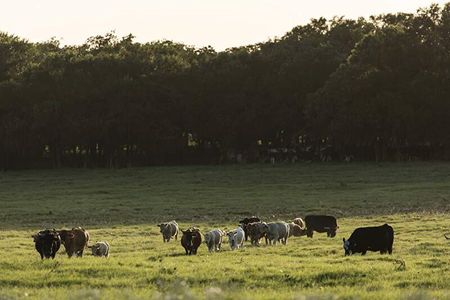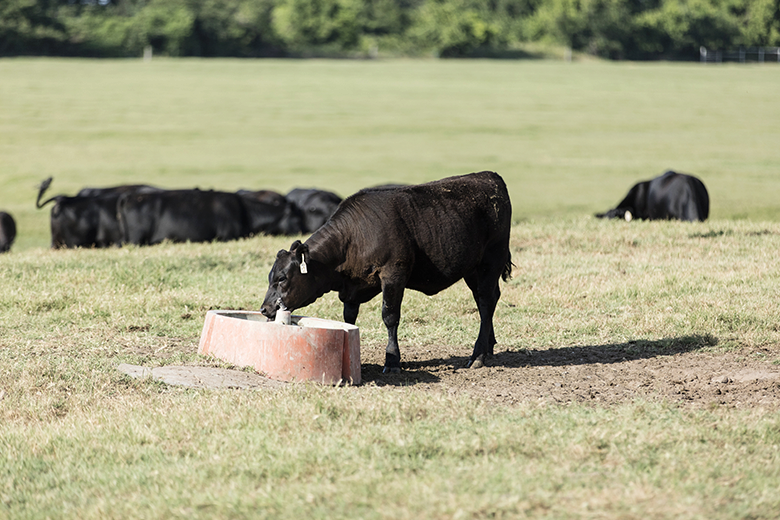
Flies on beef cattle cause reduced weight gains and decreased feed efficiency. To keep cattle performing their best and to maintain control of your bottom line, an integrated pest management (IPM) program should be put into place.
An effective IPM program should include these three key components:
-
Cultural Control
There are many cultural practices for fly control. Flies breed in manure which makes cattle manure management crucial to control. Marty Reichenberger of Diamond R Cattle runs a small calving and cow operation raising Angus and Hereford cattle. He understands the value of maintaining sound cultural practices for fly control. "In manure management, we pasture rake," said Reichenberger. "I will run a pasture harrow along to break up any manure which will help enter it into the soil once the winter breaks." Flies rest in weeds and tall grasses, so regularly maintain the pasture. When grass or other organic materials clump together, clear or spread them out so that they no longer serve as fly breeding sites. "We've got a good deal of fescue," Reichenberger said. "We will either spray it or we will let the fescue mature and flip the pasture to keep it rejuvenated."
-
Biological Boost
Incorporating naturally occurring fly enemies like parasitic wasps and predatory beetles into control efforts is a form of biological control. This natural fly control helps to limit fly populations with no adverse effect to animals or humans.
-
Chemical Containment
Once the first two components of the implementation phase are in place, it's time for the chemical phase. Feed-through fly control products, such as Altosid® IGR, work by delivering a key active ingredient to cattle, which is passed through to the animal's manure where flies lay eggs. The active ingredient interferes with the fly life cycle, preventing adult pests from emerging from the manure. Feed-through fly
control can be supplemented with other products in the chemical phase, including fly baits, perimeter sprays and fly traps. Reichenberger turned to Altosid® IGR after trying some other fly control methods. "The summer is too hot and humid to be bothering with ear tags, and I haven't had any luck with pour-ons or back rubbers." Not only has Reichenberger found Altosid® IGR to be the easiest fly control method to apply, it's also been the most effective. Fly populations have dropped significantly, and cattle health and comfort has increased. "I grow animals for money, but I want them to be comfortable most of all. I want my cattle to eat and grow and not gather up in the pond all day, avoiding the flies. When you start looking at the number of bites a day on a cow, that's got to be a hard day."
After a proper integrated pest management program has been established and put into action, it's important to continually monitor fly populations to evaluate the effectiveness of the program. Track fly populations with speck cards and fly traps, and adjust the program as needed to maximize control efforts.


